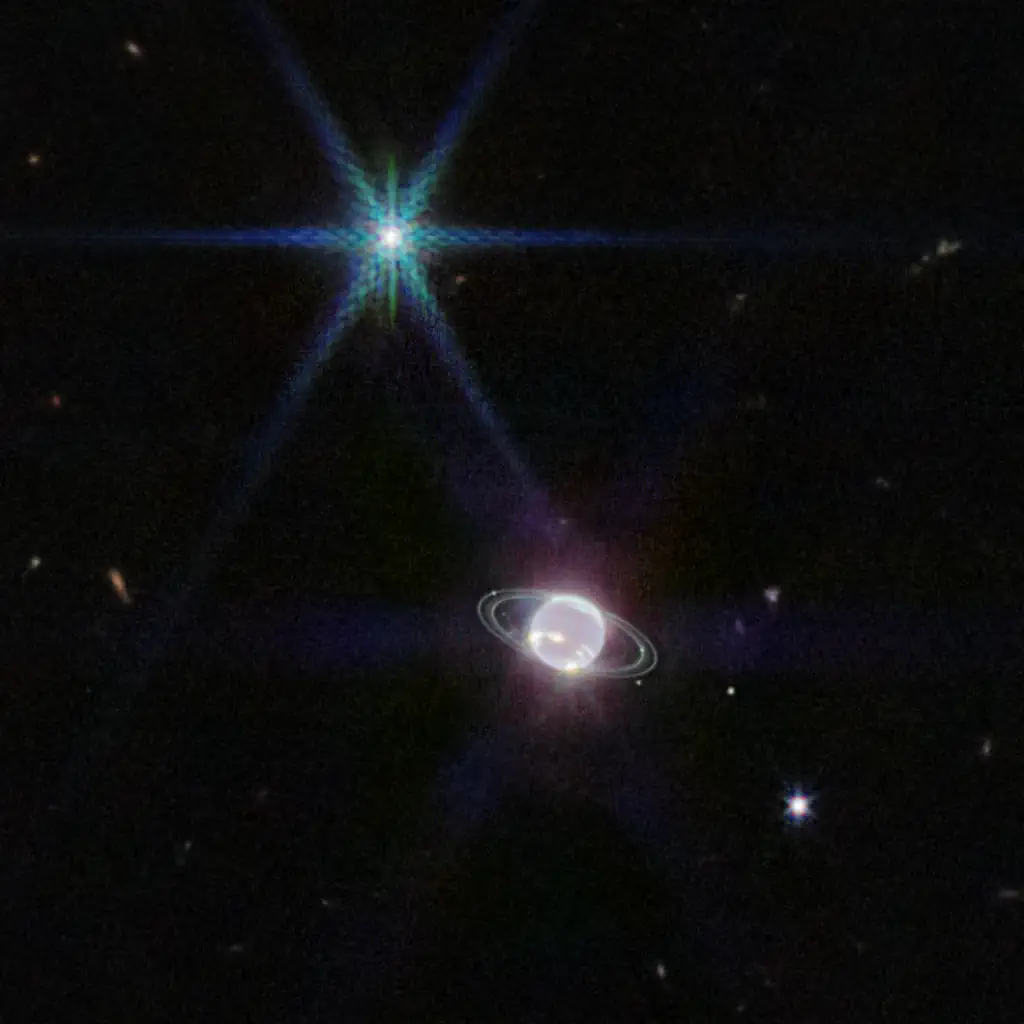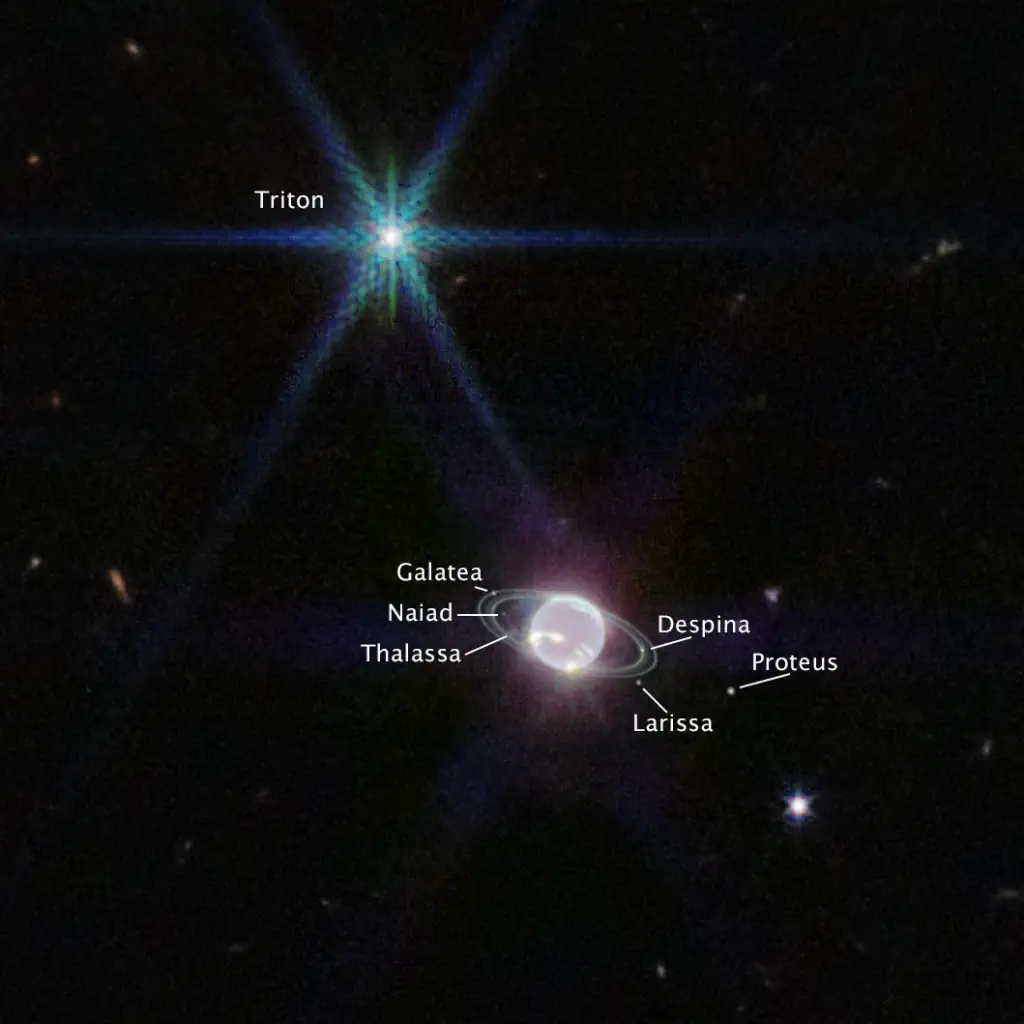Using its near-infrared camera, the James Webb Space Telescope captured amazing images of Neptune and its rings. Thanks to the newly released images, we now see Neptune’s rings for the first time since 1989, when Voyager 2 performed the first flyby to the gas giant.

James Webb’s image of Neptune and its moons
James Webb Space Telescope’s extremely stable and precise image quality permits these very faint rings so close to Neptune to be successfully detected.
Heidi Hammel, a Neptune system expert and interdisciplinary scientist for Webb, says:
“It has been three decades since we last saw these faint, dusty rings, and this is the first time we’ve seen them in the infrared.”


Triton
Covered in a frozen sheen of condensed nitrogen, Triton reflects an average of 70 percent of the sunlight that hits it. In the images taken by the James Webb Space Telescope, Triton far outshines Neptune in the images because the planet’s atmosphere is darkened by methane absorption at these near-infrared wavelengths.
Triton orbits Neptune in an unusual backward (retrograde) orbit, leading astronomers to speculate that this moon was originally a Kuiper belt object that was gravitationally captured by the gas giant.
Additional Webb studies of both Triton and Neptune are planned in the coming year.

With a radius of 1,350 km (839 mi), about 22% smaller than Earth’s moon, Triton is by far the largest satellite of Neptune. It is also one of the largest non-planets in our solar system (it is even larger than Pluto).
It is one of only three objects in the Solar System known to have a nitrogen-dominated atmosphere (the others are Earth and Saturn’s giant moon, Titan).
Triton has the coldest surface temperature in the Solar System
Triton has the coldest surface known anywhere in the Solar System (38 K, about -391 degrees Fahrenheit); it is so cold that most of Triton’s nitrogen is condensed as frost, making it the only satellite in the Solar System known to have a surface made mainly of nitrogen ice.
The pinkish deposits constitute a vast south polar cap believed to contain methane ice, which would have reacted under sunlight to form pink or red compounds. The dark streaks overlying these pink ices are believed to be icy and perhaps carbonaceous dust deposited from huge geyser-like plumes, some of which were found to be active during the Voyager 2 flyby.
The bluish-green band visible in this image extends all the way around Triton near the equator; it may consist of relatively fresh nitrogen frost deposits. The greenish areas include what is called the cantaloupe terrain, whose origin is unknown, and a set of “cryovolcanic” landscapes apparently produced by icy-cold liquids (now frozen) erupted from Triton’s interior.
Sources
- “Neptune and Its Rings Glow in Webb Telescope’s Portrait” on the Universe Today website
- “James Webb Space Telescope captures the best image of Neptune’s rings in decades” on the Engadget website
- “New Webb Image Captures Clearest View of Neptune’s Rings in Decades” on the NASA website
- Space Shuttle Endeavour’s Touchdown Meets Columbia’s Salute [An amazing photo from the past] - February 29, 2024
- Moon Landings: All-Time List [1966-2024] - February 23, 2024
- From Orbit to Ordinary: 10 Earthly Applications of Space Technology - January 23, 2024
